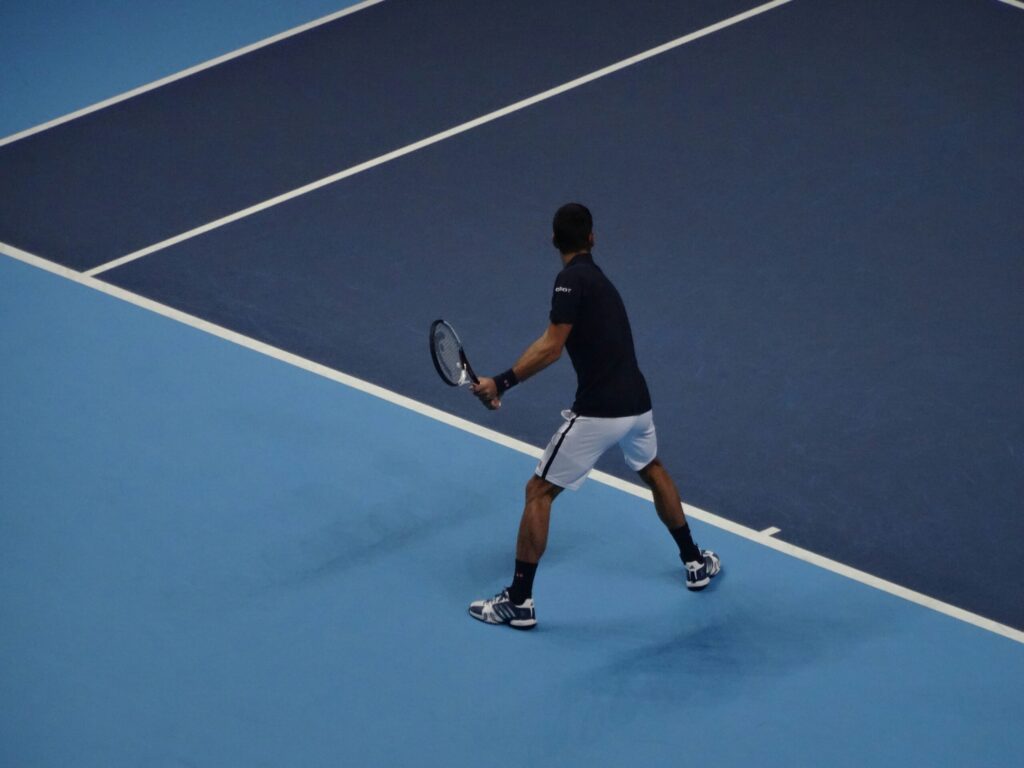On January 29, 2023, Novak Djokovic reclaimed his throne at Melbourne Park by capturing his 10th Australian Open title, defeating Greece’s Stefanos Tsitsipas in straight sets, 6–3, 7–6(4), 7–6(5). It wasn’t just another Grand Slam victory—it was a moment of redemption, resilience, and legacy-building.
The 2023 final marked Djokovic’s return to the Australian Open after a highly publicized deportation in 2022 over his COVID-19 vaccination status. The scandal had drawn global headlines, divided opinion, and placed his career in jeopardy. Yet, in typical Djokovic fashion, he responded with dominance—not just on the court, but in the narrative arc of modern tennis.
Breaking Records, Silencing Doubters
Djokovic’s win in Melbourne marked his 22nd Grand Slam title, tying Rafael Nadal at the time for the most in men’s singles history. It was also his 10th Australian Open title, a feat no other man had accomplished in the Open Era. He dropped just one set the entire tournament and played with a level of intensity that suggested he had something to prove.
What made the victory even more remarkable was that Djokovic had battled through the tournament with a hamstring injury. He wore heavy strapping throughout the two weeks, sparking debates about the extent of his condition. Skeptics questioned whether it was as severe as portrayed, but his camp later released scans confirming a tear—adding a layer of awe to his achievement.
In his emotional post-match speech, Djokovic called this win “the biggest victory of my life, considering the circumstances.” He broke down in tears while celebrating with his team, a rare public display from an athlete often seen as stoic, even polarizing.
The Match: Control and Composure
Against Tsitsipas, Djokovic was clinical. He commanded the first set with ease and showed steely nerves in the two tiebreaks that followed. Tsitsipas, seeking his first Grand Slam title, fought valiantly but couldn’t penetrate Djokovic’s impenetrable defense or match his mental stamina.
Tsitsipas was gracious in defeat, calling Djokovic “the greatest to ever hold a tennis racquet” during the trophy ceremony—a compliment that resonated with fans, commentators, and even rivals. For Djokovic, the endorsement was symbolic: respect from a younger generation that had once seemed reluctant to embrace him the way fans did Federer or Nadal.
Public Image: A Complex Rebound
The 2023 win also served to rehabilitate Djokovic’s public image, at least in part. After a year in which he was banned from two Grand Slams and labeled a “villain” in some corners of the media, his on-court brilliance reminded fans and critics alike why he is among the sport’s elite.
Though some remained skeptical of his decisions off the court, including his vaccine stance, his performance reignited conversations about separating an athlete’s personal choices from their professional legacy. His popularity surged in Serbia and among loyal fan bases worldwide, and even some of his harshest critics acknowledged the magnitude of his feat.
Behind the Scenes: Mental Fortitude and Meticulous Prep
Members of Djokovic’s team revealed after the final that his preparation for Melbourne was among the most intense of his career. He worked with a revamped physiotherapy crew to manage his hamstring issue and maintained a laser-focused diet and sleep schedule throughout the tournament. Off the court, he meditated twice daily and practiced visualization techniques—tactics he’s long credited for his mental strength.
Coach Goran Ivanišević called the 2023 win “the most emotional” of all Djokovic’s titles, noting the extraordinary external pressure he faced: “People think it’s easy to come back and win like this. But after everything he went through, it’s a miracle.”
The Legacy of January 29, 2023
The victory at the Australian Open not only reasserted Djokovic’s dominance but also redefined the narrative surrounding him. No longer merely part of the “Big Three,” he was now arguably the frontrunner in the GOAT (Greatest of All Time) debate. The milestone also sparked broader discussions about legacy in sports—how it’s shaped, preserved, and complicated by both triumph and turmoil.
In the aftermath, Djokovic’s return to world No. 1 felt like more than just a rankings update; it was a symbolic reclaiming of stature in a world that had temporarily written him off. For tennis historians, January 29 became a bookmark in the career of a man who has never been easy to define—but has always been impossible to ignore.


